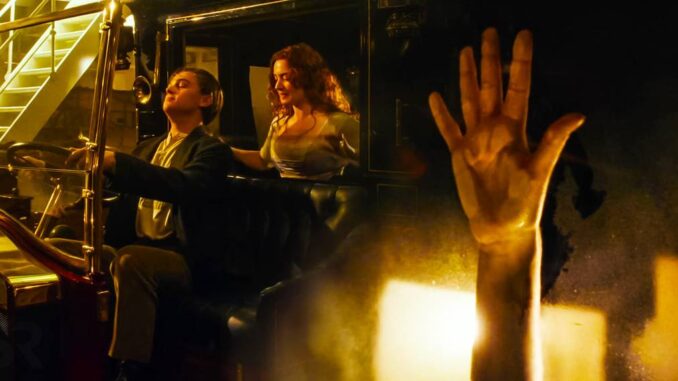
The air in the garage was thick with anticipation, the hum of the ship a distant thrum against the metallic quiet. Inside the sleek, opulent automobile, condensation bloomed on the windows, fogging the world beyond into an Impressionistic blur. A hand, small and elegant, pressed against the glass, leaving a singular, stark imprint – a silent testament to a moment of forbidden passion. This, of course, is the iconic "sex car" scene from James Cameron's Titanic, a pivotal moment where Jack and Rose's burgeoning desire finally erupted into a fervent declaration, shattering the rigid constraints of their class-divided world. But what is the "true story" behind this cinematic landmark? It’s not a tale of a secret historical tryst, but rather a fascinating exploration of meticulous historical accuracy, ingenious cinematic storytelling, and the enduring power of symbolic imagery.
The "sex car" itself was not a figment of Cameron's imagination; it was a real automobile, a 1912 Renault Type CB Coupe de Ville, and yes, it was indeed on board the RMS Titanic. This particular model, a symbol of cutting-edge luxury and an extravagant toy for the ultra-rich of the era, was owned by William Carter, a prominent American coal magnate who was traveling first-class with his family. Carter had purchased the car in Europe and was shipping it back to the United States in the Titanic's cargo hold. Cameron, renowned for his obsessive dedication to historical detail, seized upon this verifiable fact, transforming a mundane piece of cargo into a charged, intimate setting. The "true story," therefore, begins with the simple, verifiable truth of the car's presence on the doomed liner, a piece of the real world woven seamlessly into a fictional narrative.
From this solid historical foundation, Cameron constructed a scene dripping with symbolic weight. The car, tucked away in the deepest recesses of the ship, became a private sanctuary, a clandestine bubble away from the prying eyes of high society and the suffocating expectations placed upon Rose. It was a space where the rules of the upper deck – the corsets, the proper etiquette, the arranged marriage – could be momentarily shed. The grimy, industrial setting of the cargo hold contrasted sharply with Rose’s pristine upbringing, making their act of rebellion all the more potent. Here, in the belly of the beast, surrounded by the mechanical marvels and mundane possessions of a journey across the Atlantic, Rose chose Jack, chose freedom, chose a visceral, unadulterated experience that transcended her gilded cage.
The handprint, that indelible mark on the steamed glass, became the scene's enduring emblem. It wasn't just an act of physical intimacy; it was an act of profound self-discovery for Rose. It was a defiant rejection of her preordained future, a literal and metaphorical impression left on her soul. This detail, though fictional, perfectly encapsulates the emotional truth Cameron sought to convey: the fleeting, powerful connection between two souls, etched onto the very fabric of time and memory. The "true story" expands here to include the emotional authenticity that meticulous filmmaking can achieve, even within a fictional framework.
Ultimately, the "true story" behind Jack and Rose's sex car from Titanic is not a scandalous revelation of a real-life liaison, but rather a testament to the power of historical grounding in cinematic art. It illustrates how a filmmaker can take an obscure, verifiable detail – a luxury car stowed in a ship's hold – and imbue it with profound narrative and symbolic meaning. Cameron didn't invent the car on the Titanic; he merely recognized its latent potential as a silent, four-wheeled confidante to one of cinema's most passionate and rebellious romances. The scene resonates not because it depicts a historical event, but because it so brilliantly leverages historical reality to tell a deeply human story of love, liberation, and the fleeting, indelible marks we leave upon the world, and upon each other. That, in its own way, is a truth more compelling than any imagined secret affair.
